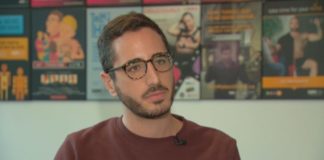
When Craig Beyerle, who lives in Philadelphia, visits the Mazzoni Center, a health institution focused on the LGBTQ community, he feels safe because he is seeing a doctor who also identifies as LGBTQ, he said.
But Beyerle, supervisor for paid social media at CMI Media Group, is aware that not every city in the U.S. has such a place. And that LGBTQ individuals also don’t often get to see, for example, same-sex couples in healthcare and pharmaceutical companies’ advertisements, social media content and other promotional materials, Beyerle said.
“Why not feature a same-sex couple — or a same-sex couple that is also a parent to a younger child who is maybe adopted?” Beyerle said. “Having these images circulated on social or different media buys can really help people feel seen or resonate with a specific brand.”
The perception that they are not welcome in the healthcare realm is common in the LGBTQ community, according to a survey conducted by Community Marketing & Insights, an LGBTQ research firm, in conjunction with CMI, Wells Fargo and Human Rights Campaign.
The survey of more than 15,000 LGBTQ individuals found that 34% of respondents feel healthcare professionals don’t understand their problems and that 46% think pharmaceutical companies do not conduct outreach or understand their identity as an LGBTQ+ individual.
There are “lots of ways that individuals personally feel that both healthcare and pharmaceutical companies can better serve the community through marketing efforts,” said Susan Dorfman, CEO of CMI.
The biggest way they could better serve the LGBTQ community, in terms of health education, is by conducting research to understand their healthcare needs, according to the survey.
The second would be to advocate and educate about mental health and wellness.
Three-quarters of participants also said that they think more positively about companies that advertise in LGBTQ media.
Even though the LGBTQ community sees unmet needs in healthcare communication, Carly Kuper, SVP of public relations and corporate communications for CMI, sees cause for optimism.
“I truly think this is the first time on a more ubiquitous scale that there has been a true interest in this truly underserved group where brands are looking to do a better job,” said Kuper.
Asked for an example of an advertisement that successfully reached the LGBTQ community, Beyerle pointed to a Botox spot featuring a gay cisgender male who works in the beauty industry and whose partner has died.
“It was really nice to see such a commercial that was completely normal,” Beyerle said. “It aired during June, which was Pride month, but I still saw it for two months after, so that resonated with me.”








